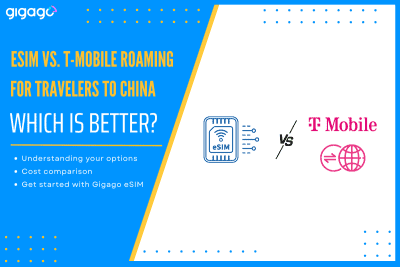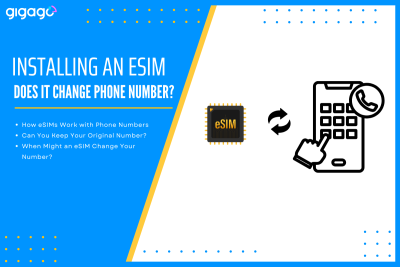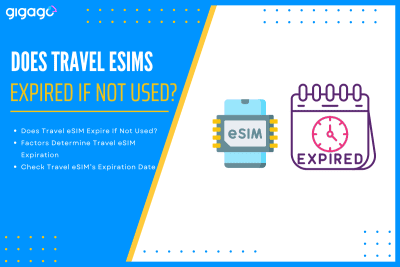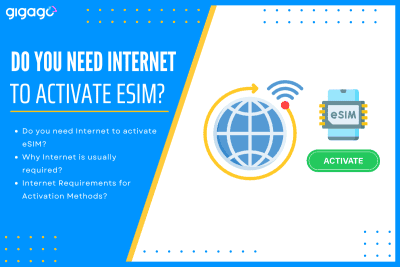When traveling to China, you generally have two main options for staying online: use T-Mobile’s built-in international roaming or purchase a travel eSIM for China for faster, more reliable data. Let’s compare eSIM vs. T-Mobile roaming for China in terms of how each option works, purchase, installation, activation, cost, compatibility, and more – all aiming […]
Should you buy an eSIM before or after arrival?
eSIM technology has made it simpler than ever to stay online abroad, but the moment you buy and activate the plan still shapes your whole trip. A decision taken at your desk weeks before departure can spare you airport stress, yet it may also lock you into higher prices or a plan that starts ticking too soon. Should you buy an eSIM before or after arrival? Understanding the trade-offs helps you step off the plane connected – and without regrets.
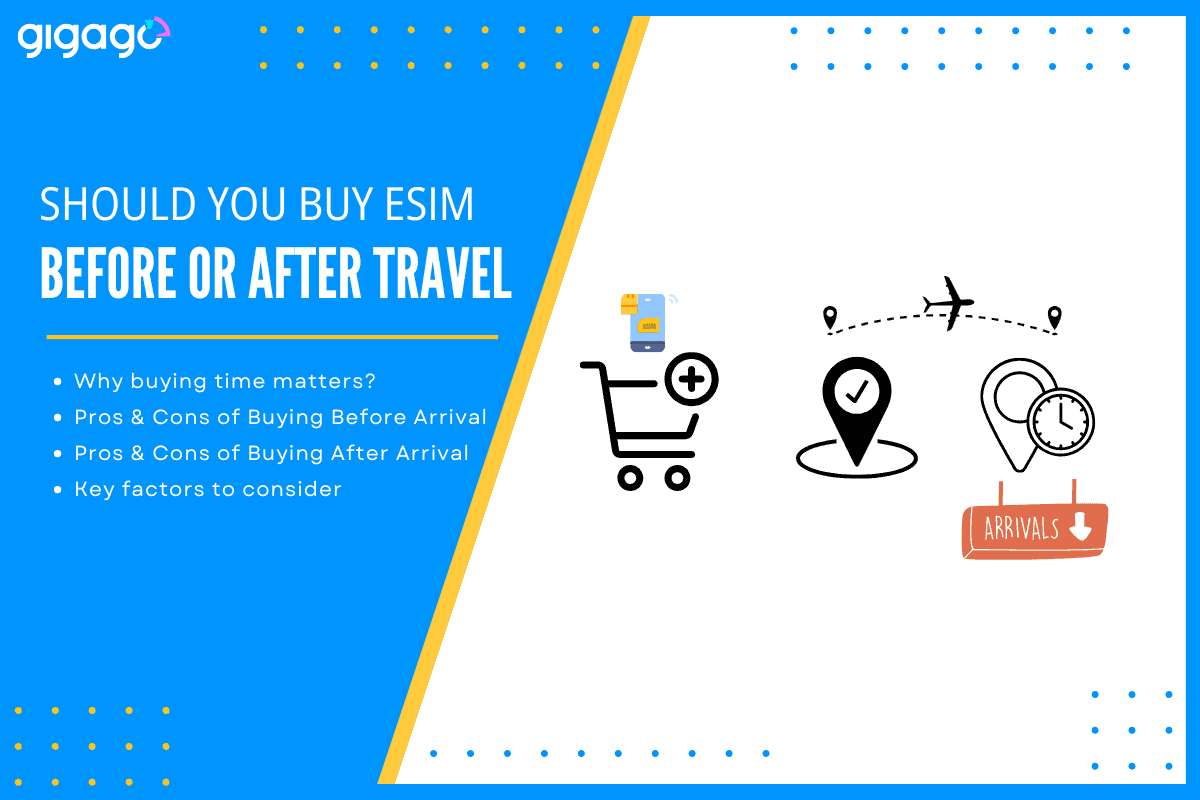
In this article
1. Why the time of buying eSIM matters for today’s travelers?
The moment you purchase – and therefore activate – an eSIM affects three things that define your experience abroad: cost, convenience, and continuity of service.
- Cost: Most tourist eSIMs start counting days from the minute the QR code is scanned. If you buy too early, part of the allowance can expire while you are still at home or in transit. Conversely, waiting until you land may give you access to cheaper local bundles – but only if you have the time and connectivity to find them.
- Convenience: Landing with data already live means instant maps, ride-hailing, and contact with your hotel. Delaying the purchase adds an extra chore when you are jet-lagged and may depend on patchy airport Wi-Fi.
- Continuity of service: Many phones allow only one or two active eSIM profiles. Activating a travel plan before you actually leave can push your primary number offline, blocking bank texts and other two-factor codes you still need.
Balancing these three factors is why the timing question is not trivial; it directly shapes how smoothly and economically you stay connected from the runway to the hotel lobby.
2. Should You Buy an eSIM Before or After Arrival?
You should buy before if you need data the instant you land or are visiting a country with payment blocks or sparse eSIM support. The small premium you might pay is usually outweighed by the certainty of having maps, rides, and messages working right away.
On the other hand, you should buy after if local tourist plans are cheap and you can tolerate a brief gap in connectivity while you set things up.
3. Pros & Cons of Buying an eSIM Before Arrival
Here are the key benefits and drawbacks of travel eSIM advance purchase, so you can see whether this decision fits your priorities:
Advantages:
- Connectivity starts the second you disable airplane mode.
- You can compare plans calmly, on a full screen, with payment methods you trust.
- Activation over home Wi-Fi avoids roaming fees or weak airport networks.
Disadvantages:
- Certain plans begin counting days right after purchase, wasting data before you even fly.
- If your flight is canceled or rerouted, the plan may not cover the new destination.
- Refund policies for unused eSIMs are often strict or unclear.
4. Pros & Cons of Buying an eSIM After Arrival
Advantages
- Local carriers often sell tourist bundles that cost less than global eSIM marketplaces.
- Validity starts when you need it, so you use every paid day.
- Staff at kiosks or stores can scan your passport and handle any required ID checks on the spot.
Drawbacks
- You must hunt for Wi-Fi or rely on public hotspots to complete the download and activation.
- Jet lag plus language barriers can make plan selection rushed and confusing.
- Popular airports occasionally run out of eSIM QR cards during peak hours, forcing you to look elsewhere.
Whether you buy eSIM before or after arrival, choosing a prestigious eSIM provider is important to warrant for your optimal connectivity experiences throughout your trip.
5. Key factors to consider
The following checklist of situational variables travelers should weigh before making the decision on buying eSIM before or after arrival:
- Trip length: Short stays favor instant connectivity; longer trips give you time to shop around locally.
- Destination infrastructure: Some airports have strong free Wi-Fi and plenty of SIM/eSIM vendors; others do not.
- Phone compatibility: Older or carrier-locked devices may reject certain eSIM profiles.
- Budget vs. convenience: Pre-buying often costs more but saves time; post-arrival flips that equation.
- Risk tolerance: Decide how comfortable you are with the possibility of landing offline for an hour or two.
